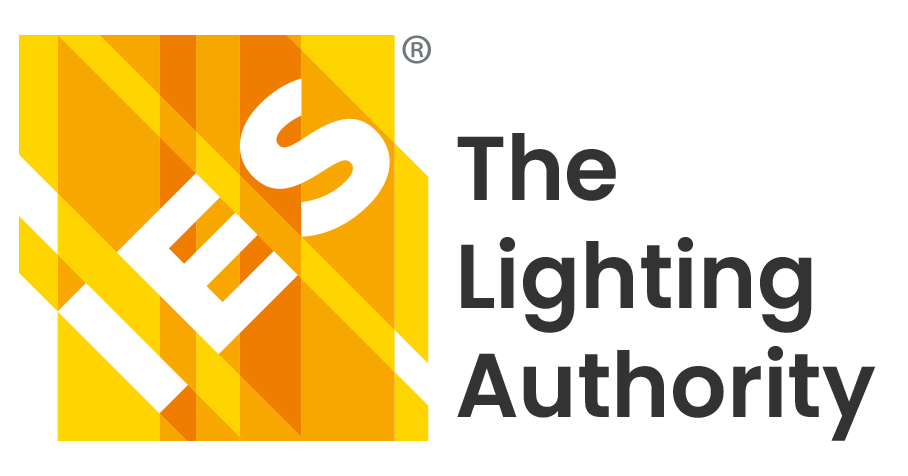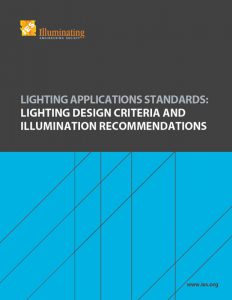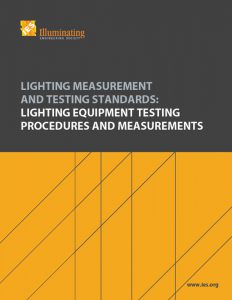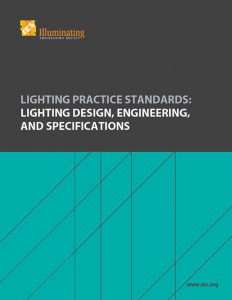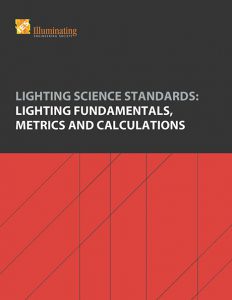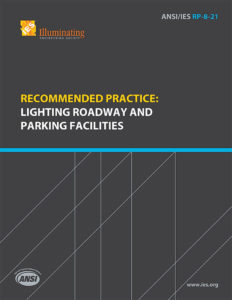Discover IES Standards through our cloud-based platform
Our standards library is unique in the lighting industry because of our attention to quality, topic breadth, and diversity of expertise. A full Lighting Library™ subscription includes access to all IES lighting standards. A subscription to one or more of our five collections (priced separately) within the Lighting Library is also available. These collections combined include over 100 ANSI-approved lighting standards, and are described below.
Our standards library is unique in the lighting industry because of our attention to quality, topic breadth, and diversity of expertise. A full Lighting Library™ subscription includes access to all lighting standards in one place and access to illuminance recommendations from IES in our Illuminance Selector.
Find illuminance values, quickly
Bookmark your favorites
Automatically updated
Fast cross-referencing
Links to reference materials
Always available online
Work more efficiently
HOW TO SUBSCRIBE
Subscriptions to the Lighting Library can be purchased by an individual, or as a Sustaining Member benefit.
Individual Lighting Library Subscription:
Lighting Library Subscription: IES Member rate: $249 | Non-member rate: $549. To purchase a Lighting Library subscription visit the My IES portal.
*Individual subscriptions to standalone collections are also available.
Sustaining Member Access:
Provide Lighting Library access to multiple users within your organization, on a simultaneous basis, with an IES Sustaining Membership. Sustaining Members are able to collaborate within the Lighting Library, and share access to notes, attachments, reports, and projects across the team. IES Sustaining Memberships feature several other educational and promotional benefits. Discover all of the benefits, and determine which level of membership best fits your organization.
SUSTAINING MEMBERSHIPIf you have any questions or need additional information, please contact lightinglibrary@ies.org.
Frequently Asked Questions
Do you have more questions about the Lighting Library? We have collected answers to common questions about the Lighting Library in our FAQ.
LEARN MORECOLLECTIONS: DESCRIPTION AND CONTENTS
Lighting Applications Standards Collection
How do I design a lighting system for a (fill in the blank)? This collection has detailed design criteria for commercial, residential, industrial, museum, healthcare and many other applications. Each standard also includes detailed recommended illuminance criteria, laid out in clear and concise tables, all designed to guide you to design a quality lighting installation.
ANSI/IES OL-IM-03
Includes access to The Interactive Illuminance Selector.
Standards Contained in this Collection
Document
Title
Recommended Practice: Lighting Offices Spaces
Recommended Practice: Lighting Retail Spaces
Recommended Practice: Lighting Educational Faciities
Recommended Practice: Lighting Library Spaces
Recommended Practice: Lighting Sports and Recreational Areas
Recommended Practice: Lighting Industrial Facilities
Recommended Practice: Lighting Roadway and Parking Facilities
Recommended Practice: Lighting Hospitality Spaces
Recommended Practice: Lighting Common Applications
Lighting for Interior and Exterior Residential Environments
Recommended Practice: Lighting and the Visual Environment for Older Adults and the Visually Impaired
Recommended Practice: Lighting Hospital and Healthcare Facilities
Recommended Practice: Lighting Museums
Recommended Practice: Lighting Maintenance
Recommended Practice: Lighting Airport Outdoor Environments
Lighting Performance for Small to Medium Sized Videoconference Rooms
Recommended Practice: Off-Roadway Sign Luminance
Recommended Practice: Lighting Port Terminals
Recommended Practice: Lighting Theaters and Worship Spaces
Recommended Practice: Lighting Exterior Applications
Recommended Practice: Ultraviolet Germicidal Irradiation (UVGI)
Recommended Practice: Lighting Horticultural Facilities
Technical Memorandum: An Optional Method for Adjusting the Recommended Illuminance for Visually Demanding Tasks within IES Illuminance Categories P through Y Based on Light Source Spectrum
Recommended Practice: Supporting the Physiological and Behavioral Effects of Lighting in Interior Daytime Environments
Recommended Practice: Landscape Lighting
Lighting Measurements and Testing Standards Collection
This collection establishes the testing and measurement standards for light sources, with the goal of providing a reliable and consistent system for calculating and measuring designed and installed illumination systems. Photometric, optical and electrical, color and color maintenance, life testing, and thermal testing are all included in this Collection.
ANSI/IES OL-IM-04
Standards Contained in this Collection
Document
Title
Approved Method: Electrical and Photometric Measurement of Fluorescent Lamps
Approved Method: Photometric Testing of Roadway and Area Lighting Fluorescent Luminaires
Approved Method: Photometric Testing of Searchlights Using Incandescent or HID Sources
Photometry of Reflector Type Lamps
Approved Method: Electrical and Photometric Measurements of General Service Incandescent Filament Lamps
Approved Method: Electrical and Photometric Measurement of High Intensity Discharge Lamps
Approved Method: Electrical and Photometric Measurements of Single-Based Fluorescent Lamp
Approved Method: IES Spatial Daylight Autonomy (sDA) and Annual Sunlight Exposure (ASE)
Approved Method: Optical and Electrical Measurements of LED Sources
Approved Method: Measuring Luminous Flux and Color Maintenance of Remote Phosphor Components
Approved Method Optical and Electrical Measurements of AC-LED Packages and Arrays or Modules
Technical Memorandum: Measurement Uncertainty for Lighting Equipment Calibration Using Integrating Spheres
Approved Method: Optical and Electrical Measurement of Ultraviolet LEDs
Optical and Electrical Measurements of Far UV-C Excimer Sources
Approved Method: Measuring In-Situ Temperature of Solid-State Lighting Components in Lamps and Luminaires
Approved Method: Photometric Testing of Roadway and Area Lighting Fluorescent Luminaires
Approved Method: Photometric Testing of Roadway and Area Lighting Luminaires Using Incandescent Filament or High Intensity Discharge Lamps
Approved Method: Photometric Testing of Floodlights Using High Intensity Discharge or Incandescent Filament Lamps
Approved Method: Guide for Determination of Average Luminance (Calculated) for Indoor Luminaires
Approved Method: Photometric Testing of Indoor Fluorescent Luminaires
Approved Method: Photometric Testing of Indoor Luminaires Using High Intensity Discharge or Incandescent Filament Lamps
Approved Method: Directional Positioning of Photometric Data
Photometric Testing of Entertainment Lighting Luminaires Using Incandescent Filament Lamps or High Intensity Discharge Lamps
Approved Method: Goniophotometer Types and Photometric Coordinates
Approved Method: Intensity Distribution Measurement of Luminaires and Lamps Using Digital Screen Imaging Photometry
Approved Method: Photometric Testing of Skylights and Tubular Daylighting Devices Under Hemispheric Sky Conditions
Approved Method: Photometric Testing of Skylights and Tubular Daylighting Devices under Hemispherical Sky Conditions
Approved Method: Application Distance Radiometry
Approved Method: IES Guide for the Selection, Care, and Use of Electrical Instruments in the Photometric Laboratory
Approved Method: Testing the Calibration of Locking Type Photoelectric Control Devices Used in Outdoor Applications
Approved Method: IES Guide to Lamp Seasoning
Approved Method: Spectroradiometric Measurement Methods for Light Source
Approved Method: Identifying Operating Factors for Installed High Intensity Discharge Luminaires
Approved Method: Laboratory or Field Thermal Measurements of Fluorescent Lamps and Ballasts in Luminaires
Approved Method: Total Luminous Flux Measurement of Lamps using an Integrating Sphere Photometer
Approved Method: Optical and Electrical Measurements of Solid-State Lighting Products
Approved Method: Characterization of Optical and Electrical Properties of Solid-State Lighting Products as a Function of Temperature
Approved Method: Measuring Luminous Flux Waveforms for Use in Temporal Light Artifact (TLA) Calculations
Photometric and Electrical Measurements of Tunable-White Solid-State Lighting Products
Approved Method: Life Testing of Fluorescent Lamps
Approved Method: Life Testing of High Intensity Discharge (HID) Lamps
Approved Method: Life Testing of Incandescent Filament Lamps
Approved Method: Identifying Operating Factors for Installed High Intensity Discharge Luminaires
IES Standard File Format for the Electronic Transfer of Photometric Data and Related Information
Approved Method: Life Testing of Single-Based Fluorescent Lamps
Approved Method: Measuring Maintenance of Light Output Characteristics of Solid State Light Sources
Approved Method: Measuring Optical Radiation Maintenance of LED Lamps, Light Engines, and Luminaires
Approved Method: Measuring Luminous Flux and Color Maintenance of Remote Phosphor Components
Technical Memorandum: Projecting Long-Term Lumen, Photon, and Radiant Flux Maintenance Of LED Light Sources
Technical Memorandum: Projecting Catastrophic Failure Rate of LED Packages
Technical Memorandum: Projecting Long-Term Luminous Flux Maintenance of LED Lamps and Luminaires
Technical Memorandum: Projecting Long-Term Chromaticity Coordinate Shift of LED Packages, Arrays, and Modules
[Table]
Lighting Practice Standards Collection
The practice of lighting design and illuminating engineering are detailed in this collection, providing basic design principles for indoor and outdoor environments, descriptions light sources, luminaires, and control systems, lighting upgrades, lighting system commissioning, lighting economics, lighting maintenance and other aspects involved with the design, installation, and construction for lighting system.
ANSI/IES OL-IM-02
Standards Contained in this Collection
Document
Title
Lighting Practice: Designing Quality Lighting for People and Buildings
Lighting Practice: Designing Quality Lighting for People in Outdoor Environments
Lighting Practice: Designing and Specifying Daylighting for Buildings
Lighting Practice: Electric Light Sources – Properties, Selection, and Specification
Lighting Practice: Lighting Control Systems – Properties, Selection, and Specification
The Lighting Design and Construction Process
Lighting Practice: The Commissioning Process Applied to Lighting and Control Systems
Lighting Practice: Upgrading Lighting Systems in Commercial and Industrial Facilities
Lighting Practice: Sustainable Lighting – An Introduction to the Environmental Impacts of Lighting
Lighting Practice: Environmental Considerations for Outdoor Lighting
Lighting Practice: IoT Connected Lighting
Lighting Practice: Introduction to Resilient Lighting Systems
Lighting Practice: Control Narrative
Recommended Practice: Economic Analysis of Lighting
Recommended Practice: Lighting Maintenance
Recommended Practice: Dimming and Control Method Designations
Technical Memorandum: Ray File Format for the Description of the Emission Properties of Light Sources
Technical Memorandum: IES Standard Format for the Electronic Transfer of Spectral Data
Lighting Practice: Lighting Parameters for Building Information Modeling
Technical Memorandum: Standard Format for the Electronic Transfer of Luminaire Optical Data
Calculation Procedures and Specification Criteria for Lighting Calculations
Guide for Security Lighting for People, Property, and Critical Infrastructure
Lighting Science Standards Collection
Every engineering discipline requires a solid scientific foundation. This collection of standards includes the language and physics of lighting, vision and visual performance, color science, color appearance and rendition, photometry, non-visual effects of lighting, photobiology, lighting calculations and more
ANSI/IES OL-IM-01
Free for IES members!
Standards Contained in this Collection
Document
Title
Lighting Science: Nomenclature and Definitions for Illuminating Engineering
Lighting Science: Concepts and Language of Lighting
Lighting Science: Physics and Optics of Radiant Power
Lighting Science: Measurement of Light – The Science of Photometry
Lighting Science: Color
Lighting Science: Calculation of Light and Its Effects
Lighting Science: Vision – Eye and Brain
Lighting Science: Vision – Perceptions and Performance
Recommended Practice: Photobiological Safety for Lighting Systems
Light and Human Health – An Overview of the Impact of Optical Radiation on Visual, Circadian, Neuroendocrine, and Neurobehavioral Responses
Technical Memorandum: IES Method for Evaluating Light Source Color Rendition
Technical Memorandum: Description, Measurement, and Estimation of Sky Glow
Lighting Roadway and Parking Facilities Standards Collection
Roadway Lighting design and engineering is unique due to the visual needs at night and the vehicle-to-vehicle and vehicle-to-pedestrian interaction. This standard covers all aspects of roadway lighting including streets and roadways, parking lots, intersections, toll plazas, tunnels, and work zones in addition to the environmental issues of light trespass and sky glow.
ANSI/IES OL-IM-05
Standards Contained in this Collection
Document
Title
Recommended Practice: Lighting Roadway and Parking Facilities
